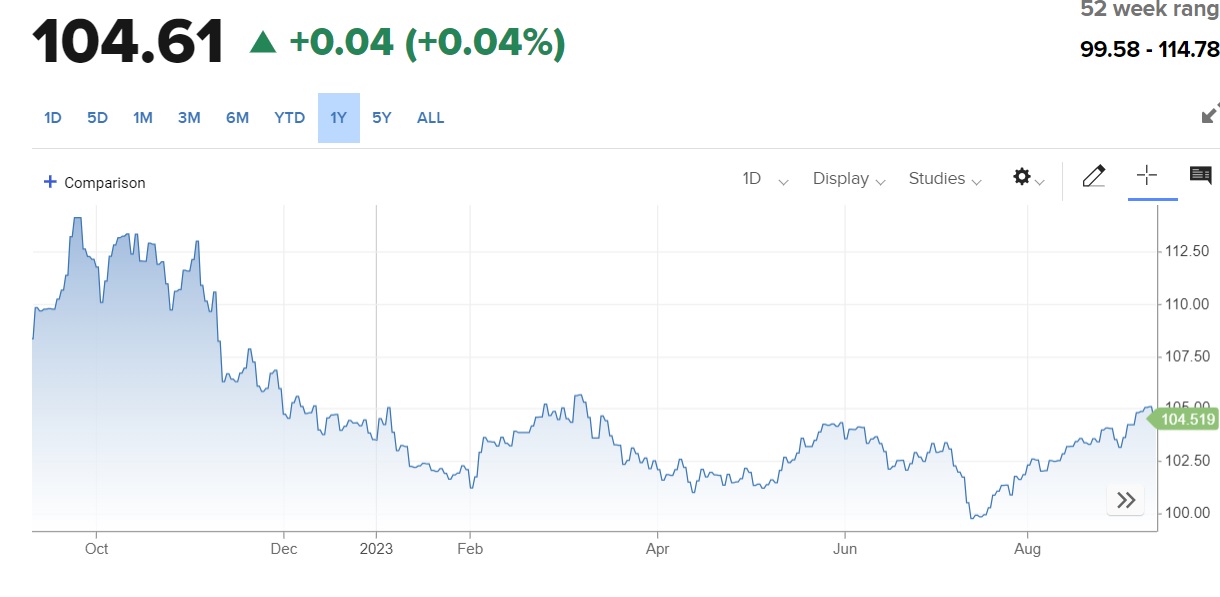How will the US dollar react to a soft landing in the US?
The question now is whether the landing for the US economy remains smooth, or whether it’s one of those landings where the plane bounces up again and veers off the runway as a result.

The US economy grew at an annualized rate of 2.1% in the second quarter of 2023, compared to the preliminary figure of 2.4% and the first quarter's expansion of 2.0%.
>> US economy outperforms its peers, US dollar will go up?
What if G10 central banks manage to eradicate inflation with little-or-no rise in unemployment and no slide into recession? This is clearly a big ‘if’ as there is deep scepticism that such a Goldilocks outcome is possible. Nonetheless, economic developments have clearly moved in this direction and they could keep doing so. If they do, does it mean that asset prices are destined to rally and the dollar fall?
If we think for a moment about where we were a year ago when the likes of the Fed was in the acceleration stage of the monetary tightening cycle, with 75-bps rate hikes coming at every meeting, things have turned out very different to the expectations at that time. Inflation has fallen as hoped, but growth has held up and the unemployment rate has barely budged. And it is not just the US where this has happened.
In last November’s Monetary Policy Report, the Bank of England was forecasting that GDP would fall 1.9% in the year to Q4 2023; a forecast that seems laughable now given that growth is turning out positive, not negative. In short, there seems to have been a touch down on the narrow landing strip talked about by so many central bankers.
The question now is whether the landing for the economy remains smooth, or whether it’s one of those landings where the plane bounces up again and veers off the runway as a result. Judging by how financial asset prices are moving right now it certainly seems that many anticipate that this soft landing will soon become bumpy again, and may even crash. But what if the pessimists continue to be denied by the incoming data flow and the apparent resilience of the financial sector, where wobbles, such as US regional bank strains fail to spoil the outlook?
In the Standard Bank’s view, it potentially leaves assets such as stocks and bonds looking quite undervalued and “safe” assets such as the US dollar, quite overvalued. This conclusion about the US dollar might seem strange. After all, there’s been a lot of focus recently on the fact that the US economy appears much more robust than many others, such as those in Europe; something that has aided the dollar recently. Surely if this resilience persists and the US effects a full soft landing the dollar will rise, not fall.

USD index
But the key here is the performance of asset prices, for if the market comes around to the view that the landing for the US and others will, indeed be a smooth one, and asset prices rise, the dollar should succumb. The inverse correlation between the performance of asset prices might be at its most recognisable when we experience a hugely adverse shock, like a pandemic, but at other times, when economic conditions are more benign, the inverse correlation tends to endure.
>> How resilient is the US economy?
“We have given reasons for why this might be the case in the past. It relates to how investment positions are funded through dollar FX swaps, and how rallies in asset prices leave investors that have funded in this way over-hedged in the dollar and hence disposed to sales of the dollar. Of course, this works in reverse when asset prices fall, and especially when they fall fast, as real dollar shortages can develop. In this instance the dollar soars. If you side with the pessimists that this apparent soft landing will actually turn into a very hard one, then long-dollar positions are the way to go. But if you believe that the glide path to a soft landing will persist, the dollar should be sold, even if the US economy is out in front of the formation. And in addition, if this smooth landing allows a smooth glide path through to policy easing, possibly led by the Fed, then the case for the dollar to fall will only increase”, said the Standard Bank.
For the moment, though, the market seems determined to take a glass-half-empty sort of view and that, alongside outperforming US data, could maintain US dollar strength a little while longer. Should the soft landing turn bumpy this strength in the dollar will accelerate and we could see the euro plunge through parity, for instance. But the Standard Bank’s base case leans more to the glass-half-full story and hence dollar strength right now is living on borrowed time.








